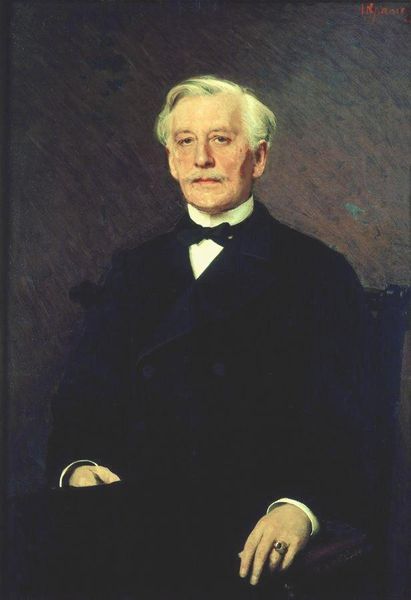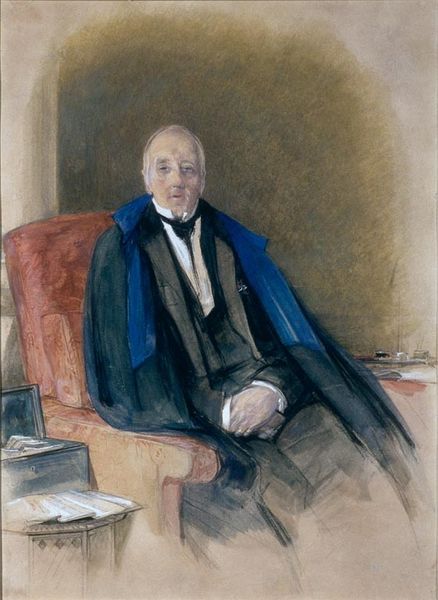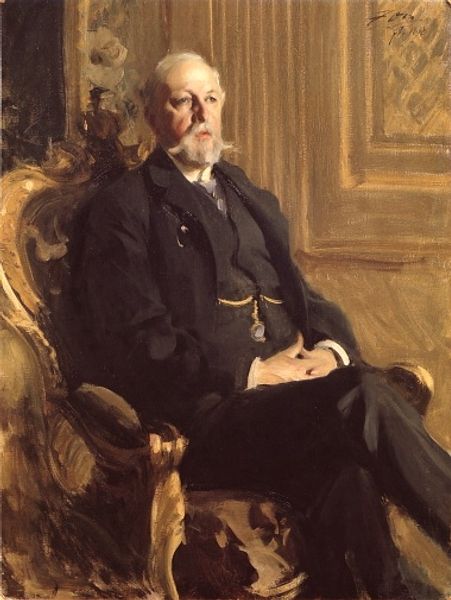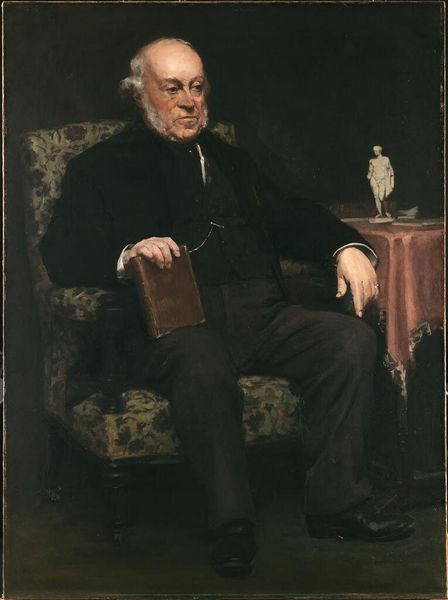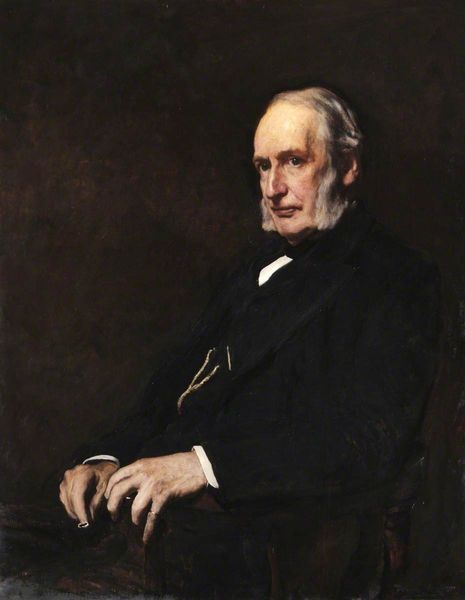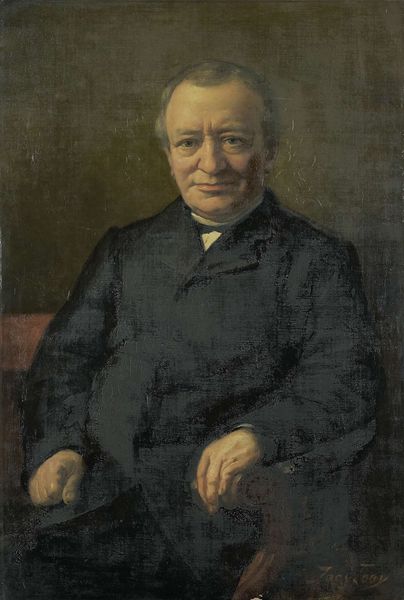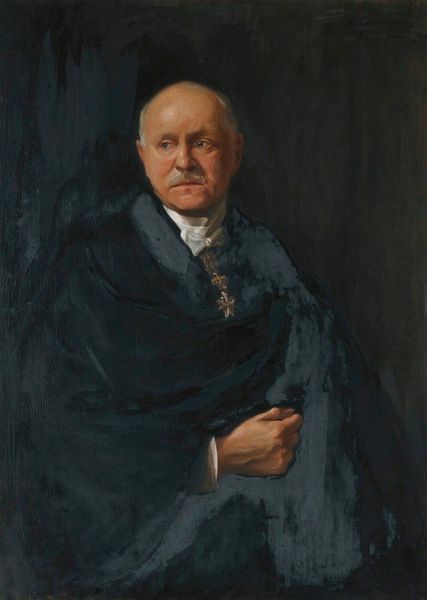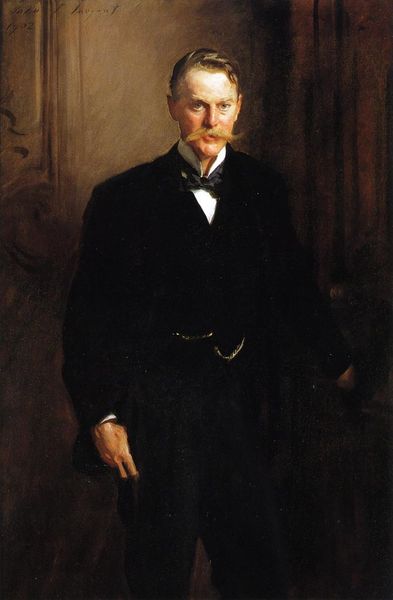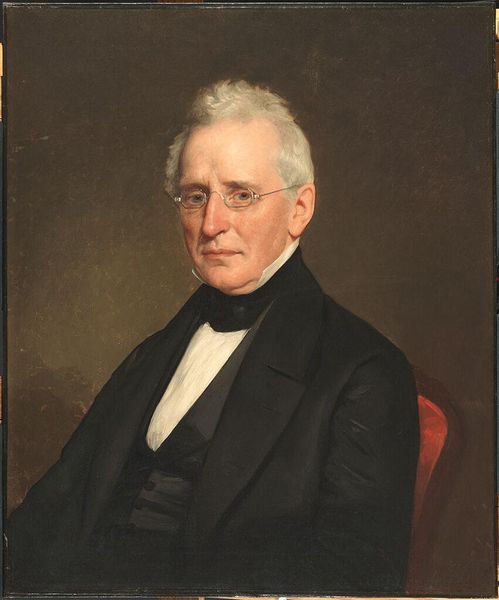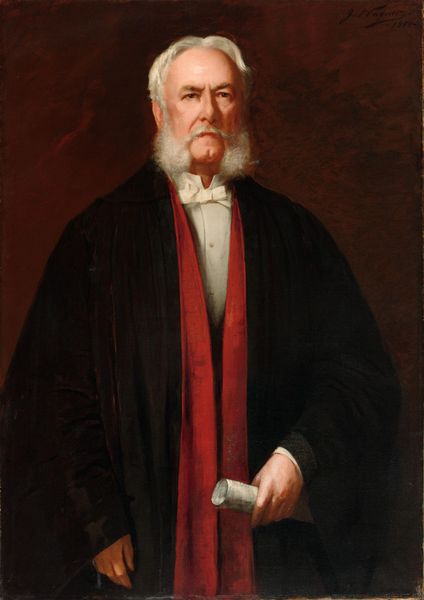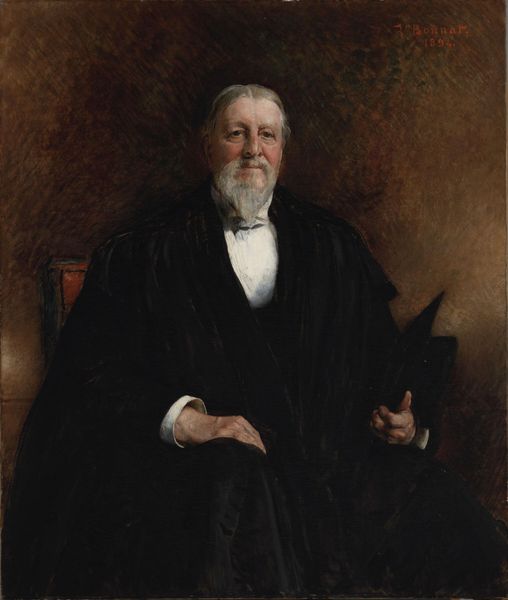
Copyright: Public domain
Editor: This is William Merritt Chase's "Colesberry Purves," painted in 1905 using oil paint. The painting evokes a sense of established authority and maybe a touch of melancholy. What symbolic readings can we draw from this portrait? Curator: Indeed, a formal portrait tells us as much about the sitter as it does about societal values at the time. Colesberry Purves, rendered in the Impressionistic style, doesn’t strive for perfect realism; rather, it captures a certain essence. The muted color palette, dominated by browns and blacks, communicates seriousness and perhaps the weight of responsibility. Editor: The muted tones are compelling. Is there a symbolic meaning in how he’s holding the rolled-up paper, or even the way he is seated? Curator: Observe the hands, clasped around the walking stick, and holding that carefully furled piece of paper. These objects are surrogates for speech or action, telling us he is a man who directs and records, whose position and intentions command attention. Does the subject meet our eye, or do they avert? Editor: He is glancing slightly to the side. It makes him seem less severe, more contemplative, but does he want to seem inviting or distant? Curator: An interesting question. Look at the placement of the light: Chase guides our eye strategically with illumination that directs what we note, guiding our psychological experience of the subject’s gaze. We should then consider whether the sitter might prefer being seen as aloof versus directly assertive in how they encounter society. Editor: Thinking about those symbolic readings helps give more weight to what would otherwise seem like a pretty standard portrait. Thank you for clarifying. Curator: My pleasure. It’s fascinating how much these portraits communicate beyond their literal representation, isn't it?
Comments
No comments
Be the first to comment and join the conversation on the ultimate creative platform.
